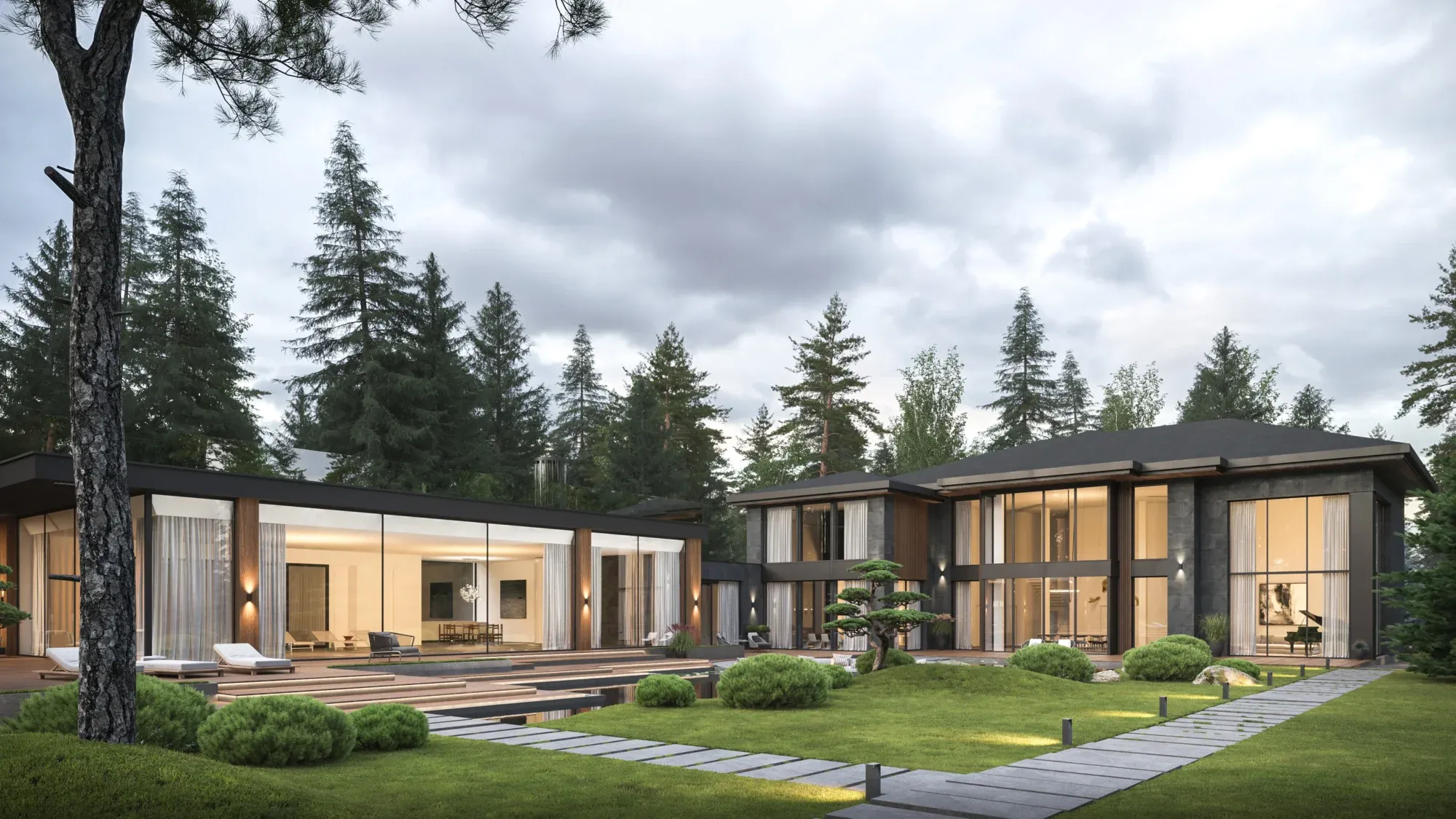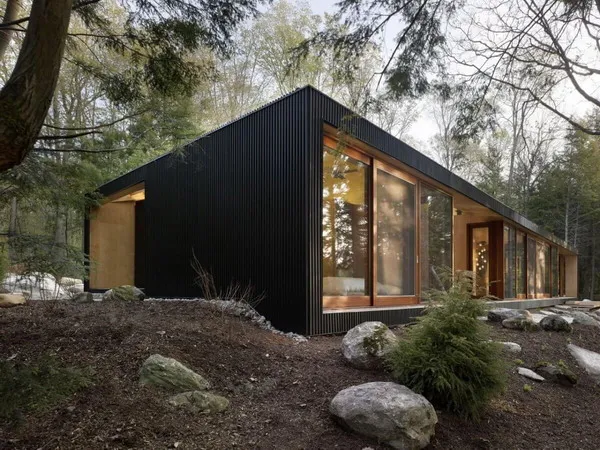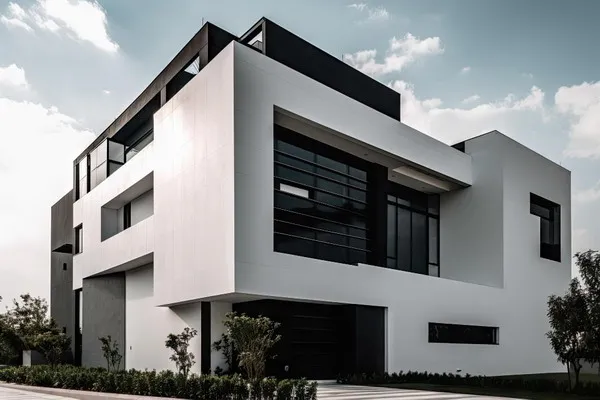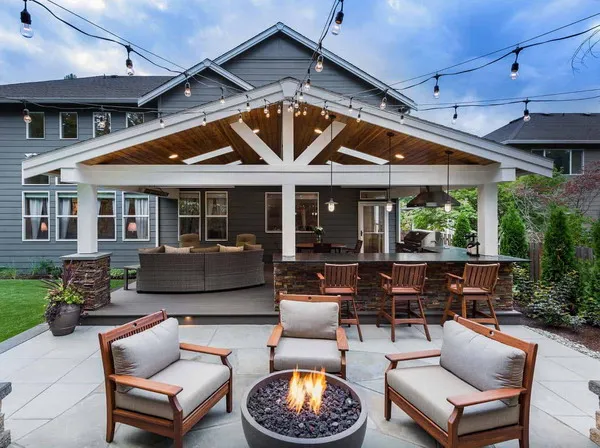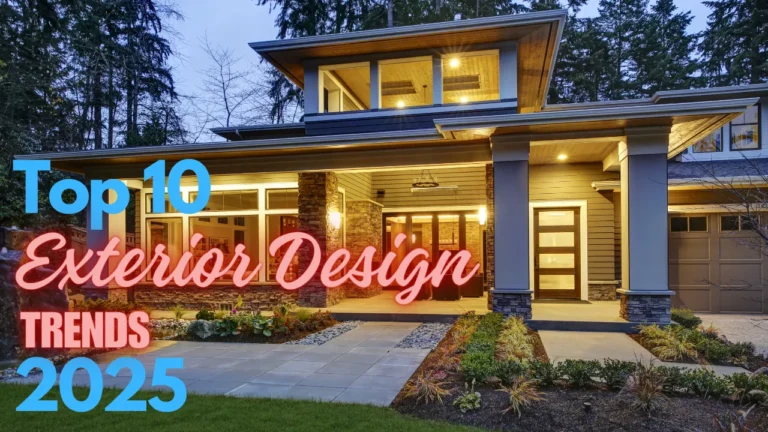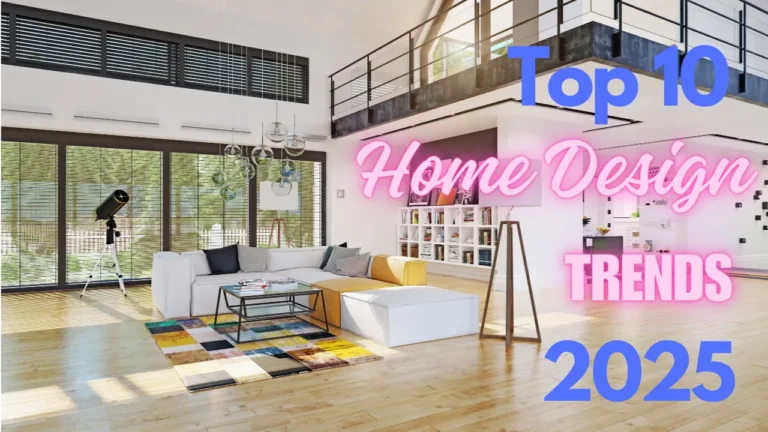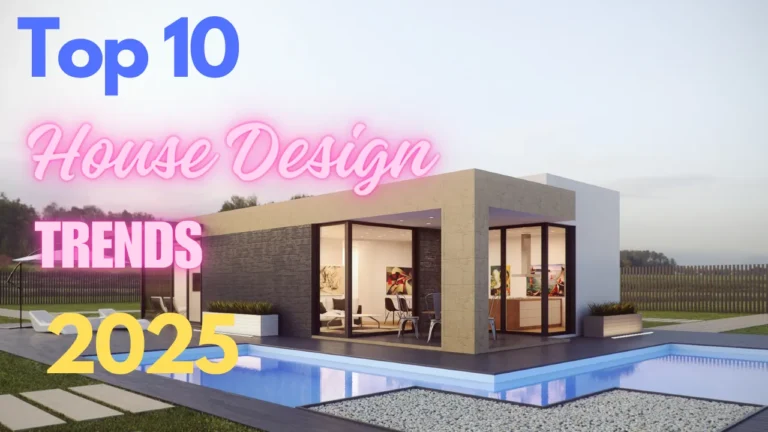Exterior Paint Trends 2025: Modern Colors to Elevate Your Home’s Curb Appeal
Last Updated on September 14, 2024 by Mutiara
Homeowners today are more conscious of the impression their homes make, not only within their communities but also within the broader context of environmental responsibility. The exterior paint trends emerging in 2025 reflect this shift in mindset, with a strong focus on eco-friendliness, innovative technologies, and thoughtful color choices that resonate with nature.
Painting the exterior of a home is no small task—it’s an investment that can last for years, adding both curb appeal and value to a property. Therefore, staying updated with the latest trends isn’t just about being fashionable; it’s about making informed decisions that enhance both aesthetic appeal and the long-term health of the home.
The exterior paint colors 2025 are marked by a blend of modern aesthetics and sustainable living, a concept that goes beyond just color. Paint is now evaluated not only on its hue but also on its environmental impact, durability, and how well it interacts with technological advancements in construction. Homeowners are increasingly opting for eco-friendly paints that reduce emissions and support a cleaner environment, aligning their homes with the larger movement toward sustainability.
In this blog, we’ll dive into the standout exterior paint trends shaping the industry in 2025, focusing first on the rise of eco-friendly paint options. From organic pigments to low-VOC formulations, sustainable paint choices are becoming central to home design. These trends aren’t just about making your home look good but ensuring that it’s healthier for you and the planet.
Sustainable and Eco-Friendly Exterior Paint Options
One of the most significant shifts in exterior paint trends for 2025 is the move toward sustainability. Environmental concerns are now at the forefront of homeowners’ minds, with a clear demand for materials that minimize environmental impact. In response, paint manufacturers are developing products that not only beautify homes but also contribute to greener living. Eco-friendly exterior paint options are no longer a niche market—they’re becoming mainstream.
The Rise of Low-VOC Paints
One of the most notable developments in sustainable exterior paint is the widespread availability of low-VOC (volatile organic compound) and zero-VOC paints. VOCs are chemicals that evaporate into the air during the drying process and can cause a variety of health issues, ranging from headaches and dizziness to more serious long-term respiratory problems. They also contribute to outdoor air pollution, making traditional paints a threat to both indoor and outdoor environments.
Low-VOC and zero-VOC paints contain fewer or no harmful chemicals, making them safer for both homeowners and the environment. These paints drastically reduce the emission of toxic gases, creating a healthier living space and cleaner air. In 2025, the use of low-VOC paints is expected to be standard for new builds and renovations, with homeowners seeking to limit their carbon footprint. The good news is that these eco-friendly options now come in a vast array of colors and finishes, meaning you don’t have to compromise on style to be sustainable.
Recycled and Renewable Paint Ingredients
Another trend in sustainable exterior paints is the use of recycled and renewable materials in their formulations. Several manufacturers are now offering paints that incorporate recycled content, such as reclaimed water or leftover paint from other projects. This not only reduces waste but also lowers the environmental burden associated with producing new raw materials.
Similarly, plant-based ingredients, such as linseed oil, citrus oil, and soy protein, are being used as alternatives to petroleum-based chemicals. These bio-based paints not only reduce reliance on fossil fuels but also offer a more sustainable product lifecycle, from manufacturing to disposal. Homeowners who are keen to make eco-conscious decisions can now choose paints that align with their values, knowing that the products they use are part of a more sustainable supply chain.
Energy-Efficient Paint Solutions
Sustainability in 2025 isn’t just about the paint’s composition—it’s also about how well it interacts with the environment after it’s been applied. One of the more exciting developments in this area is the rise of energy-efficient, or “cool,” paints. These specialized coatings are designed to reflect more sunlight and absorb less heat than traditional paints. By doing so, they help to keep homes cooler during the summer, reducing the need for air conditioning and lowering energy consumption.
This is particularly beneficial in warmer climates, where energy-efficient paint can lead to significant savings on energy bills. Reflective paints are now available in a wide range of colors, including dark tones, which traditionally absorbed more heat. Advances in paint technology mean that homeowners no longer need to sacrifice their design preferences to achieve energy efficiency—it’s possible to select deep, rich hues that reflect heat just as well as lighter shades.
Long-Term Durability and Reduced Maintenance
Another essential aspect of sustainable exterior paint is its longevity. The longer a paint lasts, the fewer resources are required to repaint the home. This has led to the development of highly durable, weather-resistant paints that can withstand extreme weather conditions, from heavy rain to intense sunlight, without fading or cracking. Durable paints reduce the frequency of repainting, saving homeowners time and money while also reducing the overall environmental impact of the maintenance process.
Many eco-friendly paints in 2025 will include self-cleaning or mold-resistant properties, helping to preserve the home’s exterior and reduce the need for harsh cleaning chemicals. These advanced formulations not only protect the home’s appearance but also contribute to a healthier, more sustainable lifestyle by limiting the use of potentially harmful substances.
As we move into 2025, the demand for sustainable and eco-friendly exterior paints will continue to rise. Homeowners are increasingly looking for products that not only enhance the beauty of their homes but also reflect their values and commitment to environmental stewardship. From low-VOC and bio-based ingredients to energy-efficient and durable finishes, the future of exterior paint is about more than just color—it’s about creating a healthier, more sustainable world.
Trending Exterior Paint Colors in 2025
Color is the most immediate and striking feature of a home’s exterior. In 2025, exterior paint trends are leaning toward palettes that not only make bold statements but also offer timeless appeal. The year is marked by a return to nature-inspired hues, earthy tones, and deeper colors that add sophistication and character to modern homes. As homeowners look to blend aesthetics with functionality, paint colors are chosen not just for their visual appeal but for how they interact with the environment, the architecture, and the home’s overall design.
Nature-Inspired Color Palettes
One of the most notable color trends for 2025 is the increasing popularity of nature-inspired hues. Homeowners are drawing from the colors found in their natural surroundings to create a harmonious connection between the built environment and the outdoors. Greens, in particular, are having a moment, with shades ranging from soft sage to deep forest green being favored for their calming, grounding qualities. These colors evoke a sense of peace and are perfect for homeowners looking to create a serene atmosphere that blends seamlessly with lush landscapes or wooded areas.
Similarly, blues are making a strong appearance in exterior paint choices. Deep, moody blues such as navy and indigo are increasingly popular, adding a sense of elegance and timelessness to homes. These shades work particularly well on modern and traditional architecture alike, providing a striking contrast against natural stone, wood, or metal accents.
The push toward organic, nature-inspired tones also includes muted browns, beiges, and taupes, which are gaining traction as a way to blend homes into their natural surroundings without drawing too much attention. These understated tones offer a sophisticated look that can withstand the test of time, making them a practical choice for homeowners wanting a more classic aesthetic.
The Rise of Bold and Dark Exterior Colors
While soft, natural tones are gaining popularity, there’s also a growing movement toward bolder, darker exterior paint colors in 2025. Homeowners are increasingly embracing deep, dramatic hues that add a sense of luxury and sophistication to their homes. Charcoal, black, and deep greys are particularly popular for modern and minimalist architecture, providing a sleek, refined look that makes a powerful statement.
One of the reasons dark colors are trending is their versatility. They can be used across a wide range of architectural styles, from contemporary homes to more traditional ones. These shades offer a striking backdrop for bright accents or natural materials like wood and stone, allowing homeowners to create a balanced, visually impactful exterior.
Another factor driving the popularity of darker hues is their ability to hide imperfections. Darker paints are less likely to show dirt, weathering, or other blemishes, making them an attractive option for homeowners who want a low-maintenance yet high-impact exterior. In 2025, dark exteriors are no longer seen as risky or overly dramatic but as a modern, sophisticated choice for forward-thinking homeowners.
Accent Colors and Contrasts
Accent colors are playing a critical role in 2025’s exterior paint trends, adding pops of color to enhance architectural features and create visual interest. Homeowners are using contrasting trim colors, doors, and shutters to break up monotone exteriors and highlight key details of their home’s design. The use of accent colors is particularly popular in modern farmhouse and Craftsman-style homes, where white or neutral bases are complemented by dark or vibrant accents.
Bold trim colors such as black, dark grey, or navy can make windows, doors, and other architectural elements stand out against lighter exterior walls, creating a sophisticated, high-contrast look. On the other hand, softer accents like dusty rose, pale yellow, or light blue can add a touch of whimsy and personality to more traditional homes.
In addition to trim and doors, many homeowners are experimenting with accent walls or feature areas to add depth and dimension to their exteriors. For example, a single wall or section of the home may be painted in a contrasting color or material, such as wood or stone, to draw attention and create a focal point. This approach is particularly effective in homes with varied textures and materials, allowing the paint to complement and enhance the overall design.
The Rise of Smart Paint Technology for Homes
In 2025, innovation in exterior paint technology is taking center stage. Homeowners are no longer simply choosing paint based on color and texture; they’re looking for high-performance options that offer energy efficiency, durability, and self-maintenance. The rise of smart paint technology has introduced revolutionary products that go beyond aesthetic appeal, making them a significant part of the 2025 exterior paint trends.
Heat-Reflective Paints for Energy Efficiency
One of the most exciting innovations in paint technology is the development of heat-reflective paints. These specialized coatings are designed to reflect a higher percentage of solar energy, preventing homes from absorbing excessive heat. This results in cooler interiors, which can drastically reduce the need for air conditioning during warmer months and lower energy consumption.
Heat-reflective paints are particularly valuable in regions with hot climates, where managing indoor temperatures is a constant challenge. What’s more, homeowners no longer need to stick to lighter colors to achieve this effect. Technological advancements have made it possible for dark-colored paints to reflect sunlight just as effectively as lighter shades, allowing for more freedom in design choices without compromising on energy efficiency.
Self-Cleaning Exterior Paints
Exterior maintenance can be a hassle, especially when dealing with dirt, mildew, and pollutants that accumulate over time. However, the introduction of self-cleaning paints is making it easier for homeowners to keep their exteriors looking pristine with minimal effort. These paints are formulated with advanced technology that allows them to repel dirt and water, causing debris to simply wash away when it rains.
Self-cleaning paints are particularly beneficial for homes in areas prone to dust, heavy rainfall, or pollution, where regular cleaning would otherwise be required. By reducing the need for frequent washing or pressure cleaning, these paints save homeowners time, money, and resources while maintaining the home’s fresh appearance year-round.
Mold- and Mildew-Resistant Paints
Mold and mildew can be a persistent problem for many homeowners, especially in humid or damp climates. In 2025, more homeowners are turning to mold- and mildew-resistant exterior paints to protect their homes from these unsightly and potentially harmful growths. These paints contain special additives that inhibit the growth of mold, mildew, and algae, ensuring that the home’s exterior remains clean and free of harmful spores.
In addition to protecting the home’s appearance, mold-resistant paints contribute to a healthier living environment by reducing the risk of mold spores entering the home and affecting indoor air quality. This is particularly important for households with individuals who have allergies or respiratory conditions, as mold and mildew can exacerbate these issues.
The rise of smart paint technology is transforming how homeowners approach exterior paint in 2025. With options like heat-reflective, self-cleaning, and mold-resistant paints, homeowners can now choose products that not only enhance the appearance of their homes but also improve energy efficiency, durability, and ease of maintenance. These innovations mark a significant shift in the way we think about paint, moving beyond color to consider how paint interacts with the environment and the home itself.
Earthy and Neutral Tones for Exterior Design
In 2025, the exterior paint trends are increasingly embracing the beauty and simplicity of earthy and neutral tones. These colors offer a timeless appeal and are a versatile option for any architectural style, making them a favorite among homeowners looking for a balanced, organic aesthetic. The soft, muted palette that includes shades of beige, taupe, clay, and stone evokes a sense of harmony with nature while also providing a sophisticated look that can withstand the changing design trends.
The Appeal of Earthy Tones
Earthy tones are making a strong comeback in 2025, partly driven by the desire to create homes that blend seamlessly into their natural surroundings. These colors—like terracotta, soft browns, and warm greys—are not only visually calming but also reflective of the broader shift toward natural materials and organic design. These tones can enhance a home’s connection to its landscape, particularly in rural or wooded areas where homeowners want to avoid stark contrasts between the built environment and nature.
Homeowners are drawn to the flexibility of earthy tones, which can work in harmony with various textures and architectural features. For example, a soft taupe or beige exterior pairs beautifully with wood or stone accents, adding depth and warmth to the overall design. Additionally, these colors have a timeless appeal that can weather the passing of trends, making them an excellent investment for those looking for a classic yet contemporary look.
Neutral Colors as a Canvas
Neutral tones like soft greys, off-whites, and sandy beige are also incredibly popular for their versatility. They act as the perfect backdrop for bold accents or architectural details, allowing homeowners to personalize their exteriors while maintaining a cohesive, understated foundation. Neutral colors provide a subtle elegance that doesn’t compete with the home’s design but instead enhances its architectural beauty.
The beauty of neutral colors lies in their adaptability. Whether your home’s style is modern, traditional, or somewhere in between, neutral tones offer a clean, sophisticated look that can be easily updated with the addition of colorful accents or changing landscaping. Moreover, neutral exteriors are particularly effective in urban environments where homeowners might want their homes to stand out while still maintaining a certain level of refinement and subtlety.
Blending Function with Style
In addition to their aesthetic appeal, earthy and neutral tones are practical choices for exterior paint. These shades tend to show less dirt and wear over time, making them a low-maintenance option for busy homeowners. As sustainability continues to influence design choices in 2025, neutrals and earth tones are also being used in conjunction with natural materials, creating a cohesive and environmentally conscious home design.
For example, pairing a soft grey exterior with natural wood siding or stone accents not only creates a beautiful contrast but also promotes the use of sustainable, long-lasting materials. In this way, earthy and neutral tones offer homeowners a way to combine style with function, ensuring that their homes remain beautiful and easy to maintain for years to come.
Bold Contrasts with Exterior Trim Colors
While earthy and neutral tones dominate the primary color choices for exteriors in 2025, homeowners are increasingly using bold contrasting colors for trims and accents. These high-contrast combinations add a level of depth and sophistication to exterior designs, allowing architectural details to pop and creating a visually striking appearance.
Black as the Ultimate Contrast
One of the standout trends in 2025 is the use of black trim against lighter, neutral-colored exteriors. Black has become the go-to choice for homeowners looking to make a dramatic yet elegant statement. When paired with whites, greys, or even soft earth tones, black trim can highlight window frames, doors, and rooflines, adding sharp, clean lines that draw the eye and enhance the home’s architectural features.
The beauty of black trim lies in its versatility. It works equally well with modern minimalist homes as it does with more traditional or farmhouse styles. The bold contrast not only elevates the exterior design but also adds a touch of luxury and refinement. For homeowners who want to experiment with dark accents without committing to a fully dark exterior, black trim provides the perfect balance between subtlety and boldness.
Dark Trim Colors Beyond Black
While black may be the most popular choice, dark greys, deep blues, and even forest greens are gaining popularity as accent trim colors in 2025. These shades offer a slightly softer contrast than black while still providing a dramatic effect. Dark greys, in particular, are favored for their ability to create a moody yet sophisticated look that complements both modern and rustic homes.
Deep blue and green trims are also making waves in coastal and nature-inspired designs, where they echo the colors of the sea and forest. These colors can add a sense of richness and tranquility to a home’s exterior, especially when paired with softer, neutral base colors. The combination of these deep, saturated tones with light exteriors creates a dynamic yet balanced aesthetic that appeals to a wide range of design preferences.
The Use of Bold Accent Colors on Doors and Shutters
In addition to trim, doors and shutters are key areas where homeowners are embracing bold accent colors. In 2025, we’re seeing a resurgence of vibrant reds, blues, and yellows used to create eye-catching focal points. A brightly colored door or a set of striking shutters can completely transform the look of a neutral or earthy-toned home, adding personality and charm.
The use of bold accent colors on doors and shutters allows homeowners to inject a bit of playfulness and individuality into their exterior designs. For example, a rich red door against a soft grey exterior can create a welcoming, classic look, while a bold teal shutter can add a splash of modernity to a traditional home. These accents provide an opportunity to experiment with color without overwhelming the overall design.
Modern Farmhouse Exterior Paint Trends
The modern farmhouse aesthetic continues to be a dominant style in 2025, with its clean lines, rustic elements, and cozy charm. Exterior paint trends within this style are evolving, blending classic farmhouse features with contemporary touches to create a fresh, updated look.
Crisp Whites and Soft Neutrals
The classic white farmhouse remains a staple in exterior paint trends for 2025. Crisp, clean whites are used to create a fresh, timeless look that exudes simplicity and elegance. These white exteriors are often accented with black or dark-colored trim, creating a striking contrast that enhances the farmhouse’s architectural features, such as large windows, porches, and barn-style doors.
While white remains popular, many homeowners are also opting for softer neutrals like light greys, beiges, and taupes to give their modern farmhouse a warmer, more inviting feel. These softer tones still retain the simplicity of the farmhouse aesthetic but offer a more contemporary twist that blends seamlessly with modern landscaping and outdoor spaces.
Deep Greens and Blues for a Modern Twist
In addition to traditional whites and neutrals, deep, nature-inspired colors like forest green and navy blue are becoming popular choices for modern farmhouses in 2025. These rich tones add a bold, contemporary touch to the classic farmhouse style, allowing homeowners to experiment with color while maintaining the rustic charm that defines the look.
When paired with natural materials like wood, stone, or metal accents, these deeper colors create a harmonious balance between modern sophistication and farmhouse warmth. Whether used as a primary exterior color or as an accent, these shades are perfect for homeowners who want to add a modern twist to the traditional farmhouse aesthetic.
The modern farmhouse trend in 2025 is all about balancing tradition with innovation. Homeowners are keeping the classic elements of the farmhouse style—like large porches, simple lines, and neutral color palettes—while incorporating modern design features and bolder color choices. Whether sticking to crisp whites or venturing into deeper, richer tones, the modern farmhouse continues to be a beloved and versatile style that resonates with homeowners across a wide range of architectural preferences.
Exterior Paint Trends for Different Architectural Styles
In 2025, exterior paint trends are not a one-size-fits-all approach. Homeowners are increasingly tailoring their color choices to complement their home’s architectural style, ensuring that the paint enhances, rather than overshadows, the unique features of their homes. Whether your home is modern, traditional, Craftsman, or something in between, there are exterior paint trends specifically suited to its design.
Modern and Contemporary Homes
For modern and contemporary homes, simplicity and clean lines often define the aesthetic. In 2025, this trend continues with the use of monochromatic color schemes and high-contrast elements. Minimalism plays a key role, with sleek, understated shades like charcoal, soft greys, and even blacks dominating the palette. These colors emphasize the structure and geometry of modern architecture, creating a look that is both bold and elegant.
However, 2025 is also seeing the introduction of bolder color choices in modern homes. Deep greens, dark blues, and even dark plum are being used to add personality to the typically muted exteriors. These colors work especially well with modern materials like steel, glass, and concrete, creating a striking contrast that feels sophisticated yet dynamic.
In terms of accent colors, modern homes are often finished with high-contrast trim or bold-colored doors. A bright red or teal door can serve as a focal point against a more neutral exterior, adding a pop of personality to an otherwise sleek and minimalist design.
Traditional Homes
For traditional homes, the key to choosing the right exterior paint color is finding a balance between elegance and comfort. In 2025, traditional homes are embracing soft, classic colors like creamy whites, light greys, and pastel shades of blue or green. These colors enhance the timeless appeal of traditional architecture, creating a warm and inviting atmosphere.
One trend gaining momentum in 2025 is the use of two-tone exteriors for traditional homes. For instance, pairing a soft, neutral base color with a darker trim can accentuate the home’s architectural features, such as window frames, shutters, and cornices. This approach adds depth and character to the home, highlighting the intricate details that define traditional architecture.
Homeowners with traditional homes are also experimenting with more saturated tones, such as brick red or navy blue, to give their exteriors a modern twist without losing the classic charm. These deeper colors can be used sparingly as accents on doors, shutters, or trims, or they can serve as the primary color for homeowners who want to make a bolder statement.
Craftsman Homes
Craftsman homes are known for their attention to detail, natural materials, and strong connection to nature. In 2025, exterior paint trends for Craftsman homes continue to embrace earthy tones and rich, warm colors that reflect the home’s handcrafted feel. Shades like olive green, burnt orange, deep brown, and warm grey are especially popular, complementing the natural wood and stone features commonly found in Craftsman homes.
One of the key elements of a Craftsman exterior is the use of contrasting trim. In 2025, homeowners are opting for dark trim colors, such as deep browns or blacks, to highlight architectural features like rooflines, window frames, and front porches. This contrast adds visual interest and emphasizes the intricate craftsmanship that defines this style.
Accent colors are also playing a big role in Craftsman homes. Front doors in bold hues like red, teal, or mustard yellow are being used to inject personality and warmth into the exterior design. These accents create a welcoming, vibrant entrance that draws attention to the home’s unique features.
Mediterranean and Spanish-Style Homes
Mediterranean and Spanish-style homes are characterized by their stucco walls, terracotta roofs, and warm, earthy color palettes. In 2025, exterior paint trends for these homes remain true to their roots, with homeowners favoring colors that evoke the sun-drenched landscapes of the Mediterranean. Shades like terracotta, sandy beige, and warm ochre are popular choices, creating a timeless and inviting look.
These homes often feature vibrant accent colors as well. Bright blues, deep reds, and bold yellows are commonly used on doors, shutters, and tiles, adding a touch of Mediterranean flair to the overall design. These accents not only highlight the architectural details of the home but also bring a sense of vibrancy and energy to the exterior.
In 2025, we’re also seeing a trend toward using lighter, cooler colors on Mediterranean homes, such as soft greys and pale blues. These shades provide a fresh, updated look while still maintaining the home’s traditional charm.
Accent Walls and Feature Areas in Exterior Design
One of the most exciting trends for 2025 is the use of accent walls and feature areas to add depth and dimension to a home’s exterior. This trend allows homeowners to experiment with bolder colors and materials on specific sections of their home, creating focal points that draw attention without overwhelming the overall design.
For example, a single accent wall painted in a deep, saturated color like navy blue or forest green can create a striking contrast against a more neutral base. Alternatively, feature areas such as entryways, balconies, or outdoor patios can be highlighted with a different texture or material, such as wood or stone, to add visual interest and break up the monotony of a single-color exterior.
This approach is particularly effective for homes with modern or contemporary designs, where clean lines and minimalism dominate the aesthetic. By using accent walls or feature areas, homeowners can introduce color and texture in a way that feels intentional and cohesive, rather than overwhelming.
Choosing Long-Lasting and Durable Exterior Paints
In 2025, durability is just as important as aesthetics when it comes to choosing exterior paint. Homeowners are increasingly looking for paints that not only look good but also stand up to the elements, require minimal maintenance, and last for years. This has led to a rise in the popularity of long-lasting, weather-resistant paints that can handle extreme temperatures, humidity, and UV exposure without fading or peeling.
High-quality exterior paints now come with advanced formulations that include UV-resistant properties, preventing the color from fading even in direct sunlight. This is especially important for homeowners living in hot, sunny climates, where UV exposure can cause significant damage to the exterior over time.
In addition to UV protection, many exterior paints in 2025 are designed to be mildew- and mold-resistant, making them ideal for homes in humid or damp climates. These paints help protect the home from unsightly growths that can damage the structure and create health hazards.
Self-cleaning paints are also gaining traction, with advanced formulations that repel dirt and grime, allowing the home to stay cleaner for longer periods. This reduces the need for frequent pressure washing or repainting, saving homeowners time and money on maintenance.
Conclusion: Personalizing Your Exterior with 2025’s Top Trends
As we’ve seen throughout 2025’s exterior paint trends, there is no shortage of options when it comes to creating a beautiful, durable, and eco-friendly home exterior. Whether you prefer the calming influence of nature-inspired tones, the drama of bold accents, or the innovation of smart paint technology, there’s a trend that suits your style and needs.
The key to choosing the right exterior paint in 2025 is to consider not only the aesthetics but also the functionality and sustainability of the products you choose. By selecting paints that reflect your home’s architectural style, enhance its natural surroundings, and offer long-term durability, you can create an exterior that is both visually stunning and built to last.
As you explore these trends, remember that personalizing your home’s exterior is about more than just following the latest fads. It’s about making thoughtful decisions that reflect your tastes, your lifestyle, and your commitment to a sustainable, beautiful home. Whether you’re drawn to the timeless appeal of neutral tones, the boldness of dark trim, or the innovation of smart paints, 2025 is the perfect year to give your home the exterior upgrade it deserves.
